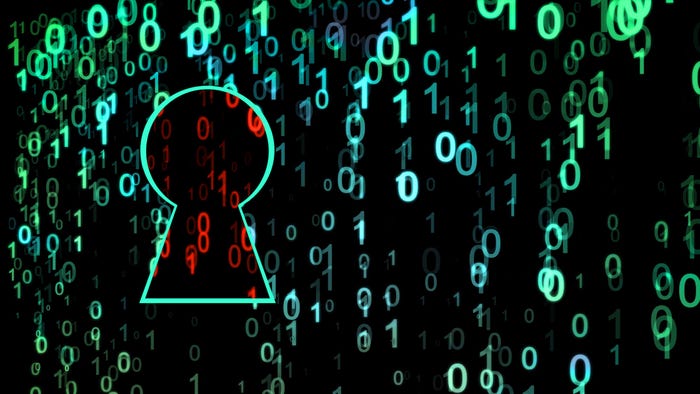Safeguarding Your Mobile Workforce
Establishing a robust BYOD security strategy is imperative for organizations aiming to leverage the benefits of a mobile-first workforce while mitigating associated risks.
May 2, 2024

COMMENTARY
The landscape of corporate IT is evolving, primarily due to the widespread adoption of software-as-a-service (SaaS), which is blurring the boundaries of traditional network perimeters. This change is promoting the widespread implementation of bring-your-own-device (BYOD) practices, which aligns with the workforce's need for flexible and mobile work options. As a result, personal mobile devices are becoming essential in business operations, allowing employees to integrate their own devices into their daily work activities.
However, the integration of personal devices into corporate systems has introduced significant security issues. IT departments are now faced with the challenge of managing devices they do not control, resulting in limited visibility regarding whether these BYOD devices possess essential security measures such as antivirus software and disk encryption. Without these protections, BYOD devices are open to numerous threats, including malware, which could compromise the devices and the sensitive corporate data they access.
The challenge for cybersecurity lies in reducing risk and nurturing a secure and efficient BYOD ecosystem. The primary solutions to this challenge are mobile device management (MDM) and secure remote access strategies. Let's delve into how these technologies work.
Primary Solutions to Cybersecurity Challenges
1. Mobile device management
Mobile device management are software solutions instrumental in securing, managing, and monitoring mobile devices within an organization, offering administrators the ability to dictate security policies, deploy software updates, and maintain compliance across various endpoints. Two strategic approaches under the MDM umbrella include:
a) Corporate workspace approach
Through the corporate workspace approach, companies can establish a secure and separate area on an employee's personal device, essentially creating two zones: one for personal use and the other for business purposes, each secured by strict security protocols. Such business zone environments ensure that corporate emails, calendars, and designated apps are accessed within a protected and encrypted space. Security measures, including rigorous password policies and the capability to remotely wipe data, are critical, providing a safeguard in cases of device loss or when an employee leaves the company.
b) Application containerization
Application containerization is a strategy that secures corporate apps and data by enclosing them in isolated containers on a user's device, protecting work-related applications from the wider device environment. This approach involves deploying containerized corporate applications that are protected with data encryption and robust authentication protocols, thus securing corporate information, even in the event that the device is compromised.
2. Secure remote access solutions
Secure remote access solutions involve methods that allow employees to connect to and interact with corporate resources through terminal servers, virtual desktops, or streamed applications. This approach keeps sensitive data within the safety of the corporate network. Strengthening these connections with policies that restrict data transfer between the BYOD device and the corporate network, along with implementing multifactor authentication (MFA), can enhance the security of remote access.
Enhancing BYOD Security
To further enhance BYOD security, organizations can implement additional controls on personal devices, introducing extra layers of defense. Here are some examples of these controls:
1. Mandating antivirus protection on BYOD devices
When utilizing VPNs for secure remote access, organizations can require that BYOD devices have antivirus software installed. The VPN client on the device could be configured to verify the presence of antivirus and that the system is fully patched before allowing a connection to the network.
2. Network access control
Network access control (NAC) solutions can be employed by organizations to conduct security checks on BYOD devices as they connect to the corporate network, whether through wired or wireless methods. Comparable to VPN controls, NAC can check for installed antivirus software and up-to-date system patches before permitting network access.
3. Multifactor authentication
Multifactor authentication is an essential aspect of a robust BYOD policy. By adding extra verification steps to access corporate resources, such as biometric authentication (like fingerprints or facial recognition) alongside traditional tokens, MFA can enhance security significantly. This method can strengthen defenses against unauthorized access, contributing to a more secure environment for the organization.
4. Network segmentation
Companies can implement network segmentation to isolate BYOD devices from critical internal resources, thereby minimizing the potential impact of security breaches.
Conclusion
Establishing a robust BYOD security strategy is imperative for organizations aiming to leverage the benefits of a mobile-first workforce while mitigating associated risks. By implementing solutions such as mobile device management and secure remote access, coupled with additional controls like antivirus protection, network access control, multifactor authentication, and network segmentation, companies can create a secure and efficient BYOD ecosystem. These measures can safeguard sensitive corporate data and ensure the integrity of the organization's network infrastructure.
About the Author(s)
You May Also Like
Why Effective Asset Management is Critical to Enterprise Cybersecurity
May 21, 2024Finding Your Way on the Path to Zero Trust
May 22, 2024Extending Access Management: Securing Access for all Identities, Devices, and Applications
June 4, 2024Assessing Software Supply Chain Risk
June 6, 2024Preventing Attackers From Wandering Through Your Enterprise Infrastructure
June 19, 2024
Black Hat USA - August 3-8 - Learn More
August 3, 2024Cybersecurity's Hottest New Technologies: What You Need To Know
March 21, 2024




